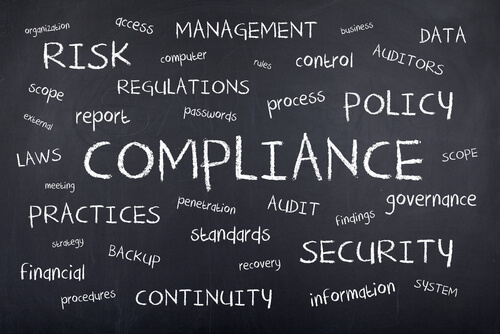 One of the most difficult tasks that every Information Governance program must deal with is getting rid of information assets that have exceeded the retention schedule. This is particularly true at the beginning of the program. There’s several reasons for it; nobody likes other people “messing with their stuff”, people don’t get rid of something because “I’ll need it as soon as I get rid of it” and then there is the hopeless feeling you get as you look out over the ocean and you are in a canoe trying to cross it – it’s just too big a task to comprehend when there are more important things to do. The only comfort I can offer to all of these issues is that everyone goes through it and it simply is a task that must be done. If the Retention Schedule says it’s time to go, it has to go. Otherwise you don’t have a defensible disposition practice and you are done. So it’s time to get to it! How do you eat an elephant – one bite at a time!
One of the most difficult tasks that every Information Governance program must deal with is getting rid of information assets that have exceeded the retention schedule. This is particularly true at the beginning of the program. There’s several reasons for it; nobody likes other people “messing with their stuff”, people don’t get rid of something because “I’ll need it as soon as I get rid of it” and then there is the hopeless feeling you get as you look out over the ocean and you are in a canoe trying to cross it – it’s just too big a task to comprehend when there are more important things to do. The only comfort I can offer to all of these issues is that everyone goes through it and it simply is a task that must be done. If the Retention Schedule says it’s time to go, it has to go. Otherwise you don’t have a defensible disposition practice and you are done. So it’s time to get to it! How do you eat an elephant – one bite at a time!
One of the most important things to remember is that you are not alone, It’s time to lean on the steering committee again. There is someone in every department that understands the information governance program and their responsibilities in it. Use them to navigate the departmental politics while handing out the shovels and get going! The guiding document in this process is the Records and Retention Schedule. The Records and Retention Schedule tells you what to keep and how long to keep it. It’s a straightforward process at the beginning of the process: If it’s listed on the schedule you find the most current example of it and preserve it, otherwise get rid of it. Granted this is easier said than done for the reasons I listed above, but the benefits far outweigh the time it takes to sort through it. This is where the steering committeeman comes in to help encourage everyone to participate.
An important thing to remember is that everyone, more than likely, has a file full of stuff that they use to do their daily business. Chances are everyone in the department has the exact same thing in their files. Why not have just one in a departmental central file that everyone can access? Collaboration is better for business, improves everyone’s daily process, saves time and saves storage cost. This sharing of knowledge is one of the hidden benefits of information governance. I have found over the years that there’s always one person that seems to know everything about some vital business process and I always ask “what are you going to do if this person leaves?” Succession planning is part of information governance too!
Getting back to the process of getting rid of information assets; you can’t just have people clear out their files and throw them into a shredding pile. Why you ask? Because you have to have a legally defensible process in case you are ever called before a judge to explain what you did to destroy a file that may have been requested in some far off case. I will grant you that this may never happen, but it’s better to have a defensible process in place just in case.
With that in mind, here’s a process I’ve found works well:
The key to the entire process lies in a person or persons that are intimately familiar with the type of record you are deleting. It’s this person’s knowledge you take to create a workshop to teach the rest of the staff what to look for when dumping redundant, obsolete or transitional information to get to the Records you are looking for. This person’s responsibility continues once the dump pile has been made to verify these files can be destroyed. They are responsible to sign a Letter of Destruction authorizing your shred vendor to complete the process (this signed letter becomes a Record by the way). This can be a simple spot check or a more in depth review of the discarded files, it’s up to the authorizing person to determine what they are comfortable with before putting their name on the dotted line.
That’s it! That’s the entire process. Now you need to make it fun! Create a departmental contest around finding Records and purging the rest. Have Purge Days! Create a staging area where people can bring the shredding bins and you can review the files to ensure it’s safe to destroy them. Who has the most purged files? Who found the oldest Record? Have prizes, buy pizza! Get everyone involved! The idea is to highlight that the Information Governance program is everyone’s responsibility. Make it enjoyable and your people will follow.



